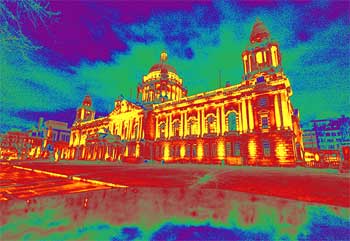DESIGNING THE FUTURE WITH REAL PROJECTS
“What gives you hope that a sustainable future is possible?” In Designed for the Future: 80 Practical Ideas for a Sustainable World, Jared Green — the same Green who edits this blog, and, full disclosure, was my boss when I was a communications intern at ASLA — offers 80 thought-provoking and frequently inspiring answers to this question from landscape architects, urban planners, architects, journalists, artists, and environmental leaders in the U.S. and beyond. The book’s tone is highly conversational and reflects the voices of the book’s contributors. Each passage is the result of an interview with Green, who serves largely as curator for this reading experience. To those in the field, the names are like a who’s who of respected leaders in these professions. But while professionals will certainly enjoy it, this book is aimed squarely at the public, as it’s as scrubbed-free of design jargon as possible and offered in bite-size pieces easy to pick up for a few minutes at a time or read entirely through on a weekend afternoon.
Largely, it’s successful in this aspect, capturing the essence of the ideas at the core of each real world example without losing the reader in technical terms and excess detail. However, in a few cases, the description is so sparse as to leave uncertain exactly what the project is about.
Some of the projects feature new technologies applied in innovative ways. Lighting designer Leni Schwendinger, now with Arup, is inspired by Illuminate, a three-year research program in six European countries showing the way to the future of light-emitting diode (LED) lighting in public spaces. The study examined not only at energy savings and carbon reductions, but also the quality of light in terms of brightness, color temperature, and color rendition (whether the object illuminated looks true to life). It’s the artificial nature of these latter qualities that tend to sway many designers away from LEDs, despite their energy savings, but this study shows they are being improved, and LEDs may soon be able to use “intelligent controls to create malleable lighting” in our parks, plazas, and museums.
Jonsara Ruth, a professor at The New School / Parsons, discusses Mushroom Board from the firm Ecovative, a product that uses mycelium, the “roots” of mushrooms, to literally grow an organic Styrofoam replacement. Styrofoam is an incredibly polluting material, but Mushroom Board, a cutting-edge use of bioengineered materials that can be grown to almost any shape and size, is completely biodegradable. Imagine appliances coming packed in Mushroom Board or homes insulated with mushroom in the walls instead of spray-in foam.
Many projects feature materials and infrastructures from the past that have been given new life to serve contemporary needs. Landscape architect Thomas Woltz, FASLA, Nelson Byrd Woltz, describes how Braddock, Pennsylvania, is in the process of transforming much of its abandoned and toxic industrial lands, re-envisioning them as a place for urban farming and healthy community initiatives.
And Peter Harnik, Hon. ASLA, director, Center for City Park Excellence, Trust for Public Land, describes how Midtown Greenway in Minneapolis is a railway that’s been converted into one of the most successful trails for cyclists and pedestrians. Built in a trench to not interfere with auto traffic, it’s a delight for its users who can go for long stretches without having to negotiate intersections and vehicle conflicts.
One overarching theme is the need to further connect social, environmental, aesthetic, and economic benefits that have been considered for too long in isolation. For decades, we’ve known, in theory, that achieving quadruple-bottom line benefits is essential for sustainability. These existing projects show how multiple benefits can be achieved in the real world, and the positive impact they can have on communities and the environment.
Green offers a lovely quote in his introduction from science fiction writer William Gibson: “The future is already here, but it’s just not evenly distributed.” Environmental advocacy and action can so easily just focus on the negative or emphasize only the compromise and sacrifice necessary for “saving the planet.” The examples in Designed for the Future show that not only is our future not all doom and gloom, but there’s plenty to be excited about here and now. The future is here. Now let’s start spreading today’s successes around as widely as possible.
This guest post is by Yoshi Silverstein, Associate ASLA, founder and lead designer-educator at Mitsui Design.














Follow Us!